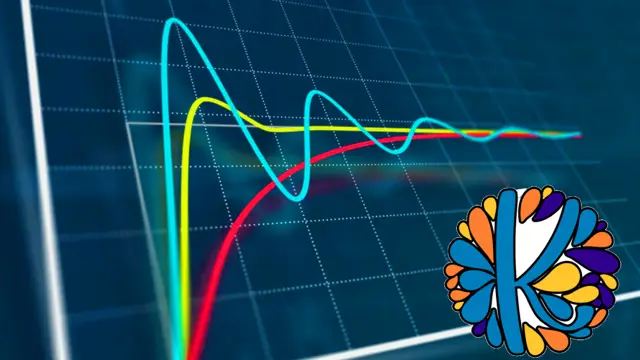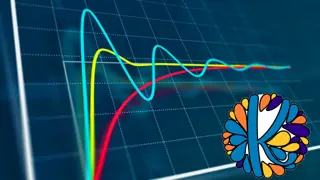
Ultimate Automatic Control Theory in Electrical Engineering
Learn about automatic control including root-locus, PID, compensators, bode plot, and Nyquist for electrical engineering
Summary
- Reed Courses Certificate of Completion - Free
- Tutor is available to students
Add to basket or enquire
Overview
Welcome to our course, "Ultimate Automatic Control Theory in Electrical Engineering," where you will learn everything about automatic control theory from scratch for electrical engineers.
Certificates
Reed Courses Certificate of Completion
Digital certificate - Included
Will be downloadable when all lectures have been completed.
Curriculum
-
Mathematical Modelling of Systems 1:32:47
-
Block Diagram Reduction 34:37
-
Signal Flow Graph 1:13:36
-
Time Response Analysis 3:20:12
-
Control System Stability 1:46:25
-
Root-Locus Method 2:20:26
-
Compensators in Control Systems 2:15:13
-
PID Controllers 2:33:59
-
Polar Plot 1:15:31
-
Nyquist Criterion 2:51:34
-
Bode Plot 3:26:08
-
Design of Compensators Using Bode Plot 1:43:29
Course media
Description
What Students Will Learn from the Course:
Fundamentals of Control Systems:
Understand the basic principles of automatic control.
Learn the importance and applications of control systems in various fields.
Mathematical Modelling:
Develop mathematical models of electrical and mechanical systems.
Gain proficiency in Fourier Series, Fourier Transform, Laplace Transform, and Linear Time-Invariant (LTI) systems.
Block Diagram and Signal Flow Graph Techniques:
Master the concepts of block diagrams and their reduction techniques.
Convert block diagrams into Signal Flow Graphs (SFG) and use Mason’s Formula.
Time Response Analysis:
Analyze the time response of first and second-order systems.
Understand key specifications like rise time, peak time, and settling time.
Stability Analysis:
Determine system stability using the Routh-Hurwitz criterion.
Calculate steady-state errors for different inputs and systems.
Root-Locus and Frequency Response Methods:
Learn to sketch root-locus plots and analyze their effect on system behavior.
Perform frequency response analysis using polar plots, Nyquist criteria, and Bode plots.
Compensators and PID Controllers:
Design and implement various compensators in control systems.
Understand and tune PID controllers using methods like Ziegler-Nichols and Particle Swarm Optimization.
This course provides a comprehensive understanding of control systems, from fundamental concepts to advanced techniques, ensuring students are well-prepared to apply these skills in real-world scenarios.
Who is this course for?
- Undergraduate and graduate students in electrical, mechanical, and control engineering.
- Engineers and professionals looking to deepen their understanding of control systems and enhance their practical skills.
- Researchers focusing on control techniques and their applications.
Requirements
Basic mathematics
Questions and answers
Currently there are no Q&As for this course. Be the first to ask a question.
Reviews
Currently there are no reviews for this course. Be the first to leave a review.
Provider
Khadija Academy was founded by engineer Ahmed Mahdy who is an electrical power engineer and a researcher. He is also an electrical bestselling instructor at more than 30 platforms, teaching electrical engineering, and has helped more than 80,000 students from 198 countries achieve career success with simple and easy courses. He is currently the top-ranked (1st) in the engineering sector of Udemy.
He had received the award for the best master's thesis in the Faculty of Engineering - Ain Shams University for 2022/2023.
Some of his published research works in the top electrical engineering journals worldwide:
1- Transient stability improvement of wave energy conversion systems connected to power grid using anti-windup-coot optimization strategy - Energy Journal - Impact Factor of 9.0.
2- Nonlinear Modeling and Real-Time Simulation of a Grid-Connected AWS Wave Energy Conversion System - IEEE Transactions on Sustainable Energy - Impact Factor of 8.8.
3- Modeling and optimal operation of hybrid wave energy and PV system feeding supercharging stations based on golden jackal optimal control strategy - Energy Journal - Impact Factor of 9.0.
4- State-of-the-Art of the most commonly adopted wave energy conversion systems - Ain Shams Engineering Journal - Impact Factor of 6.0.
5- Optimal Design of Fractional-Order PID Controllers for a Nonlinear AWS Wave Energy Converter Using Hybrid Jellyfish Search and Particle Swarm Optimization - Fractal and Fractional - Impact Factor of 5.4
6- Dynamic performance enhancement of nonlinear AWS wave energy systems based on optimal super-twisting control strategy - Ain Shams Engineering Journal - Impact Factor of 6.0.
Legal information
This course is advertised on Reed.co.uk by the Course Provider, whose terms and conditions apply. Purchases are made directly from the Course Provider, and as such, content and materials are supplied by the Course Provider directly. Reed is acting as agent and not reseller in relation to this course. Reed's only responsibility is to facilitate your payment for the course. It is your responsibility to review and agree to the Course Provider's terms and conditions and satisfy yourself as to the suitability of the course you intend to purchase. Reed will not have any responsibility for the content of the course and/or associated materials.

